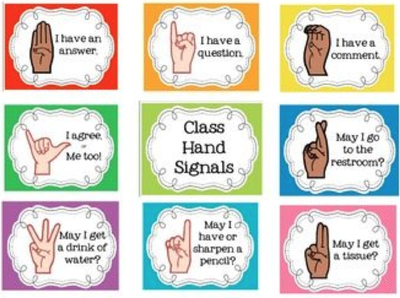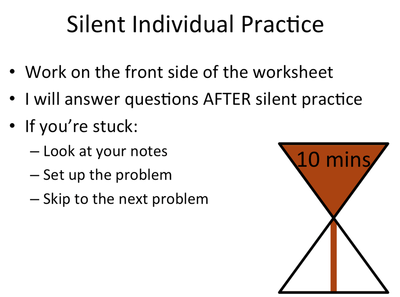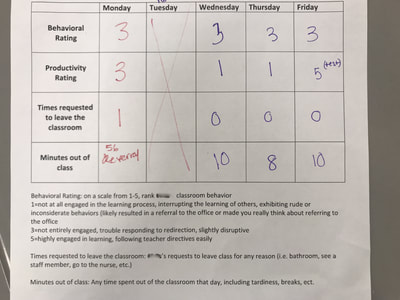Managing Impulsivity
MANAGING IMPULSIVITY OVERVIEW
One of my year-long goals is for students to reduce the number of demerits they earn for poor impulse management by 50% over the course of the year. My students are less than two years away from high school graduation, so self-impulse management is essential. My students need to learn to manage their impulses, so that they can make informed and mature decisions. To improve impulse management, I explicitly teach and reinforce managing impulsivity in my classroom through classroom routines, independent work, and behavior tracking. At the start of the school year, our class discussed “triggers or specific situations that make it difficult to manage impulsivity” (Johnson et al., 2005). Then, we agreed on movement, voice, and position impulse management expectations and practice through interactive modeling. Expectations are reinforced every day verbally and visually, and are tracked so that students are aware of their improvement.
Please scroll down or click on the table of contents below to learn more about how managing impulsivity is explicitly taught and reinforced in my classroom each day.
TABLE OF CONTENTS
Impulse Management Vision
Impulse Management Presentation
Impulse Management Classroom Visuals
Impulse Management Tracker
Teacher Reflection
One of my year-long goals is for students to reduce the number of demerits they earn for poor impulse management by 50% over the course of the year. My students are less than two years away from high school graduation, so self-impulse management is essential. My students need to learn to manage their impulses, so that they can make informed and mature decisions. To improve impulse management, I explicitly teach and reinforce managing impulsivity in my classroom through classroom routines, independent work, and behavior tracking. At the start of the school year, our class discussed “triggers or specific situations that make it difficult to manage impulsivity” (Johnson et al., 2005). Then, we agreed on movement, voice, and position impulse management expectations and practice through interactive modeling. Expectations are reinforced every day verbally and visually, and are tracked so that students are aware of their improvement.
Please scroll down or click on the table of contents below to learn more about how managing impulsivity is explicitly taught and reinforced in my classroom each day.
TABLE OF CONTENTS
Impulse Management Vision
Impulse Management Presentation
Impulse Management Classroom Visuals
Impulse Management Tracker
Teacher Reflection







